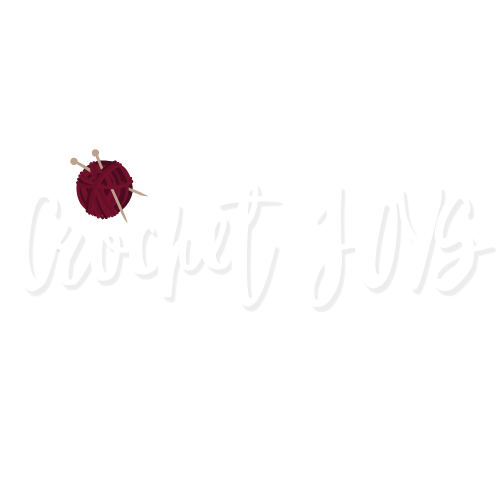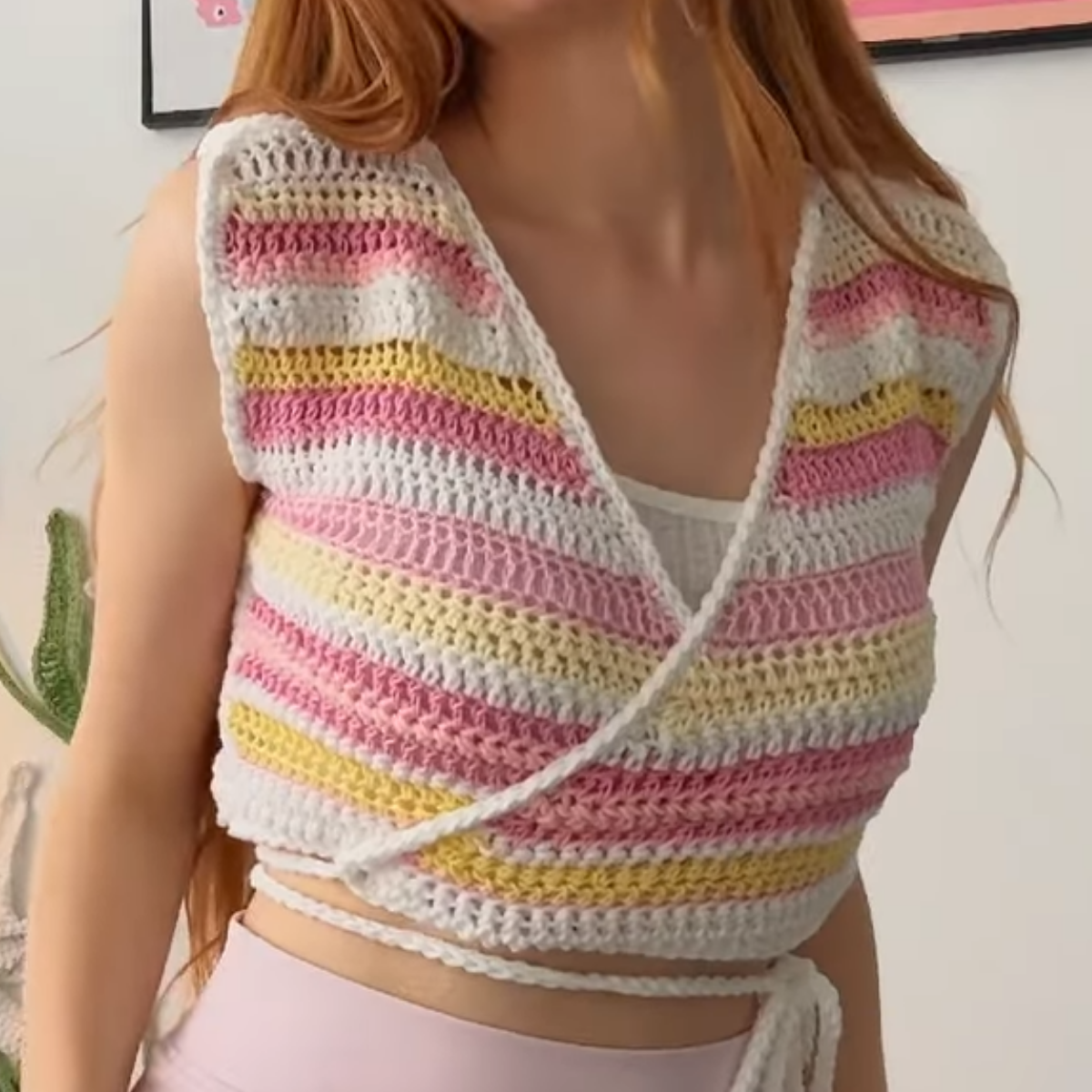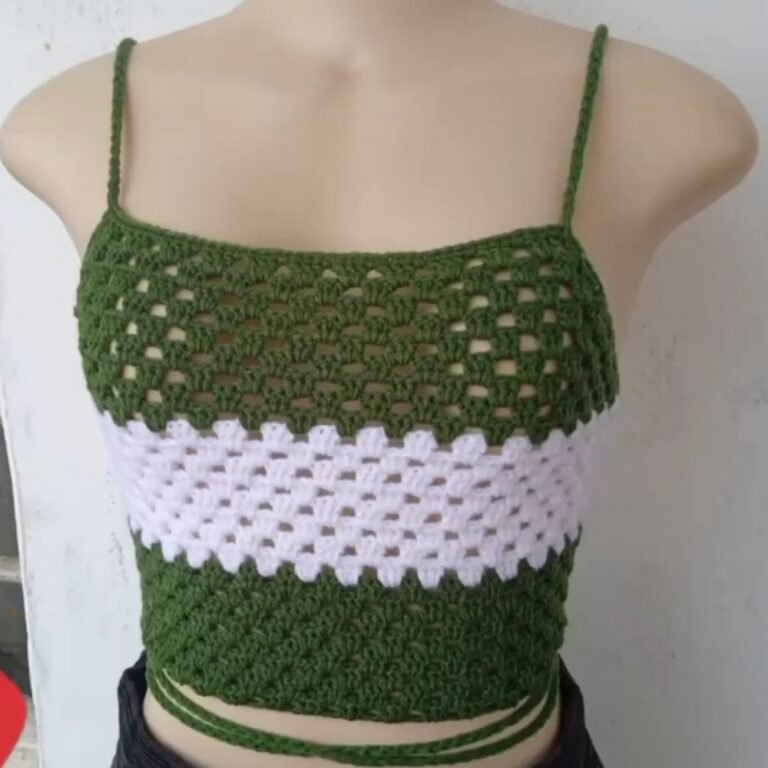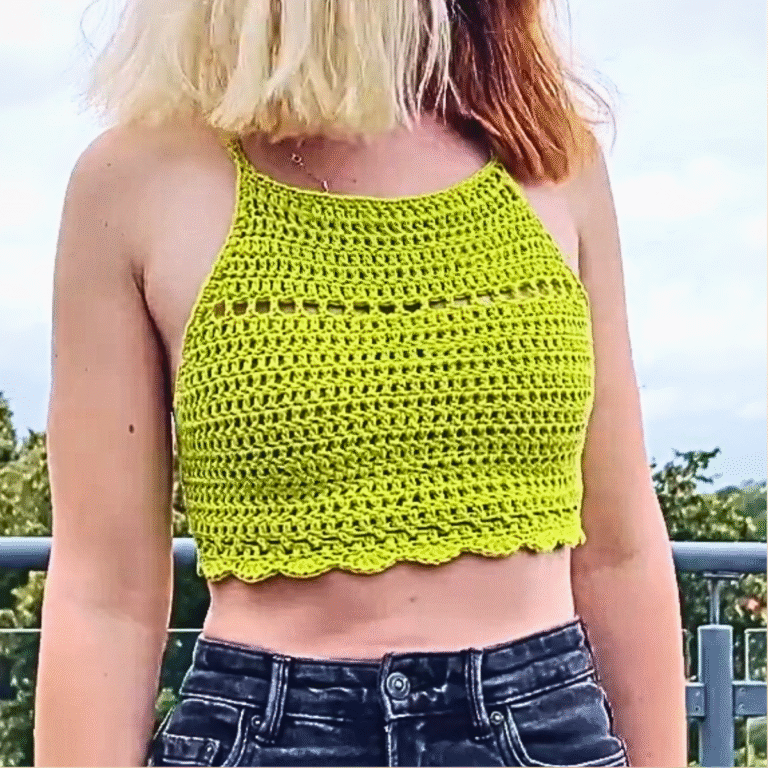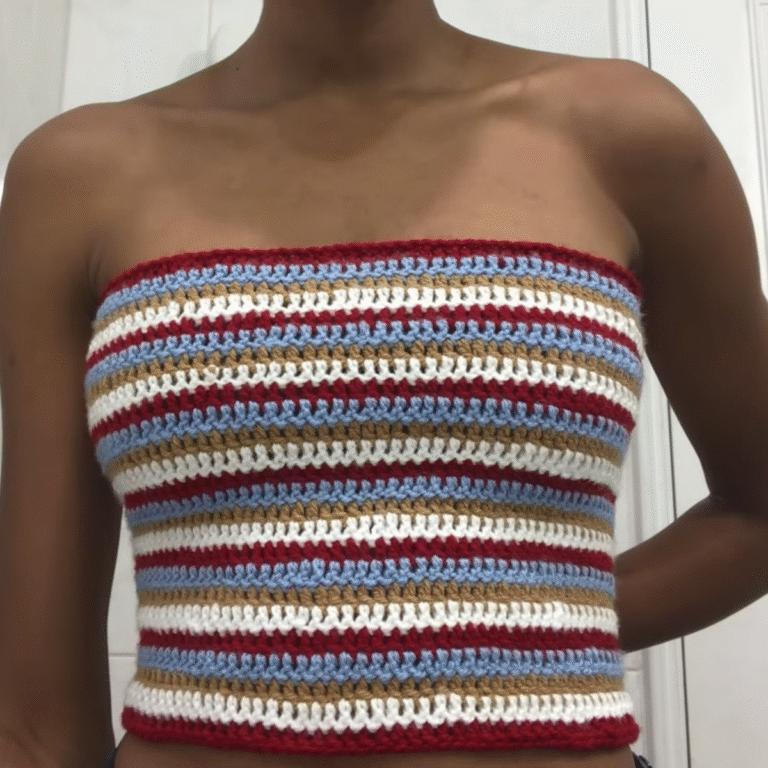Unique Crochet Wrap Top Pattern for Sustainable Fashion
Accept the challenge of creating sustainable fashion with our unique crochet wrap top pattern, perfect for style and eco-conscious creativity.
Modern Crochet Wrap Top Pattern for Everyday Comfort
Spare yarn often sits unused for long periods, but turning it into something practical and stylish is a clever way to minimize waste. A crochet wrap top is a lightweight, sustainable option that beautifully utilizes leftover yarn in various colors, textures, and thicknesses. This versatile garment designed to be cropped with ties around the waist can transition seamlessly from a casual vest to a wrap top, making it ideal for various occasions.

The project begins by selecting yarns that harmonize in color, even if they differ in type, such as cotton, acrylic, or mohair. Adding neutral shades like white can brighten the overall palette and create balance. A 5mm crochet hook, scissors, and a yarn needle are all it takes to start. The design incorporates alternating stitches, including double, single, and half-double crochet, which give the top structure and texture, while decreasing rows shape the fit.
Beginners and seasoned crocheters alike will enjoy this simple method, where functionality meets aesthetic charm. A neat edging and optional short sleeves further refine the piece. Whether worn casually or dressed up, the finished piece serves as a delightful way to repurpose materials into something timeless, proving sustainable fashion starts with a thoughtful touch.
Step-by-Step Details of The Pattern: Crochet Wrap Top/Cardigan from Leftover Yarn
Headings and Information
Special Features
- Focus on Leftover Yarns:
The project emphasizes using leftover yarns of matching color palettes. Instead of being strict with yarn types or thickness, the aesthetic value is based on harmonious colors.
Tutor suggests introducing white yarn to elevate mismatched palettes as it brightens and unifies the overall design. - Pilates-Core Aesthetic:
The design aligns with the Pilates-core aesthetic—cropped garment with ties to wrap around the waist. Kate shares how to customize the look for personal preferences (e.g., longer cardigan or sleeveless vest). - Mix of Stitches:
Each row is crocheted with a different type of stitch (e.g., single crochet, double crochet, half-double crochet) to add texture and pattern to the top.
Level of Difficulty
Beginner-Friendly:
Kate assures viewers that even total crochet beginners can complete this project. Only basic stitches (single crochet, double crochet, half-double crochet, slip stitches) and simple decreases are needed.
Tutor’s Suggestions
- Plan Color Order:
Plan the arrangement of colors beforehand to ensure a cohesive design. This step avoids confusion and ensures the finished item appears visually balanced. - Start with a Foundation Row:
Instead of starting with a chain row, Kate recommends using a foundation row of double crochets for stretchier and sturdier results. - Organize Notes:
Kate highly recommends using the Shadow Notes app for storing patterns or drafting tutorials. It includes features like hidden notes and color-coded layouts for an organized workflow. - Subscription Boxes:
Beginners or those looking for crochet ideas are encouraged to try subscription boxes from “Hooks and Needles,” which provide curated yarns, tutorials, needle tools, and gifts tailored for knitting or crocheting.
Uses and Materials
Uses:
- The wrap top can be styled as:
- A cropped summer layer.
- A wrap cardigan with extended sleeves.
- A unique vest without sleeves.
Materials:
- Leftover yarns of various types (cotton, acrylic, mohair).
- Recommended tools:
- 5 mm crochet hook.
- Scissors.
- Yarn needle.
- Stitch markers (optional).

Step-by-Step Summary
- Start with Color Planning:
Match leftover yarns by color. Use white yarn to unify palettes if needed. - Crocheting Base Pieces:
- Begin with 39 foundation double crochet stitches (or chain stitches + double crochets).
- Alternate rows with different stitch types (single, double, half-double crochet).
- Perform decreases on one side of the crochet piece for shaping.
1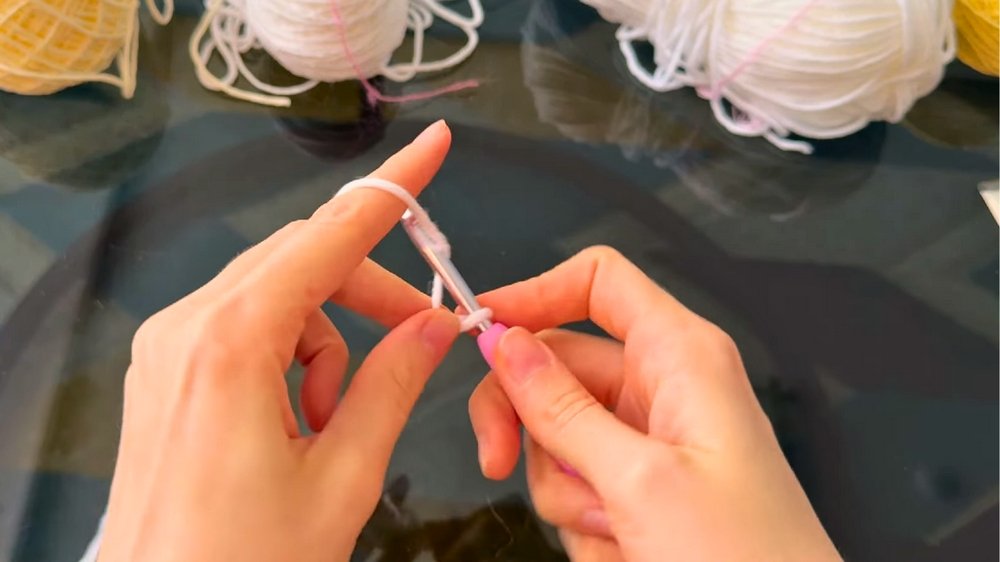
- Making Front Panels:
- Create two identical front panels using the same stitch and color sequence. Ensure shoulder and base dimensions match.
- Add edging with single crochets and slip stitches for a polished and uniform look.
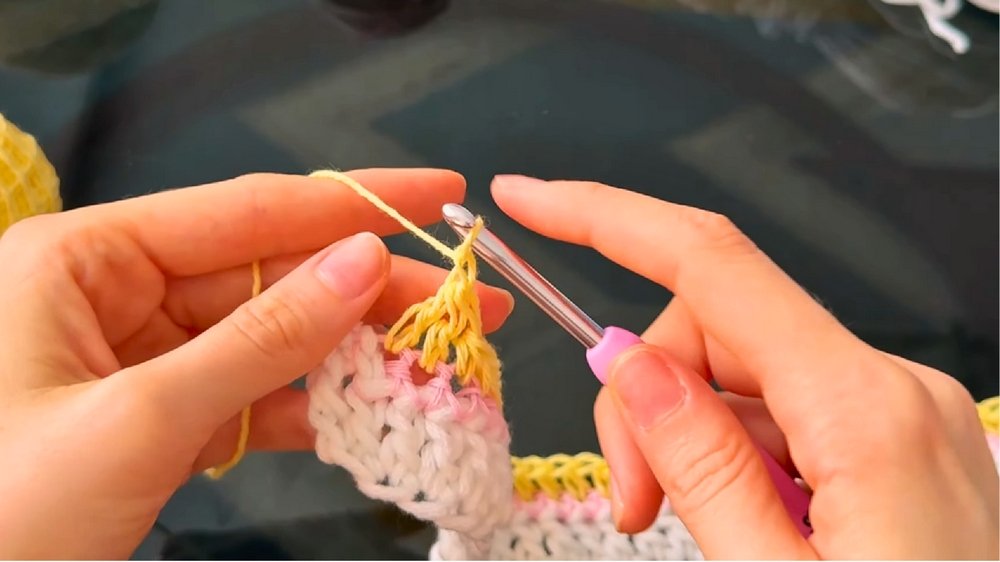
- Making the Back Panel:
- Crochet a straight rectangle matching the width and height of the front panels.
- Repeat edging steps.
- Join Panels Together:
- Align the wrong sides of the panels and join via single or slip stitches.
- Leave gaps for armholes.
- Adding Ties:
- Crochet 110+ chain stitches from the corner of the front panels.
- Add edging with slip stitches for durability.
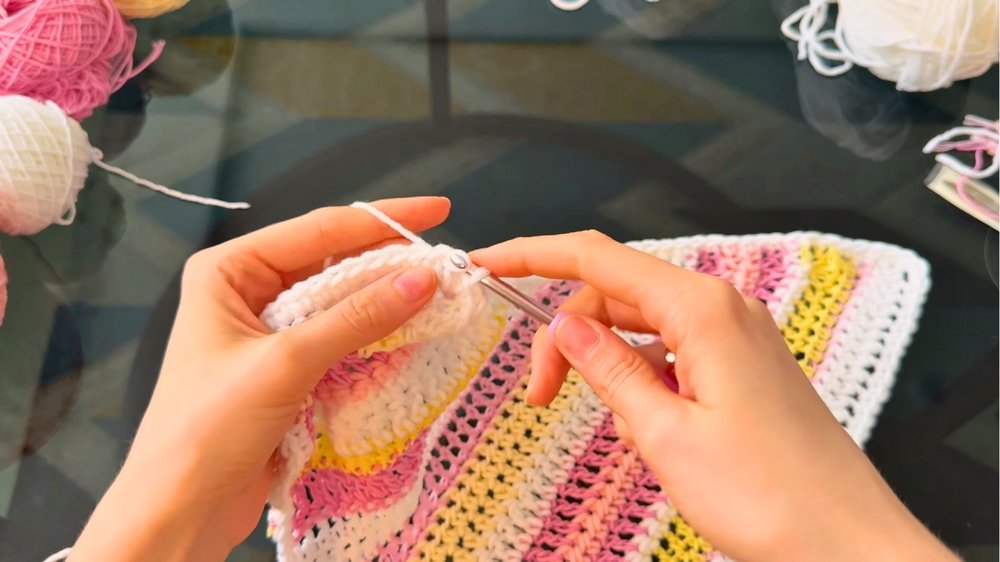
- Adding Ties:
- Crochet 110+ chain stitches from the corner of the front panels.
- Add edging with slip stitches for durability.
- Optional Sleeves:
- Work in rounds with decreases at the shoulder seam for shaping. Crochet up to six rows or to desired sleeve length.
- Add edging with slip stitches as final finishing touches.
- Final Customizations:
- Sleeve length can be modified or omitted. Adding a unique knot in the middle adds versatility.
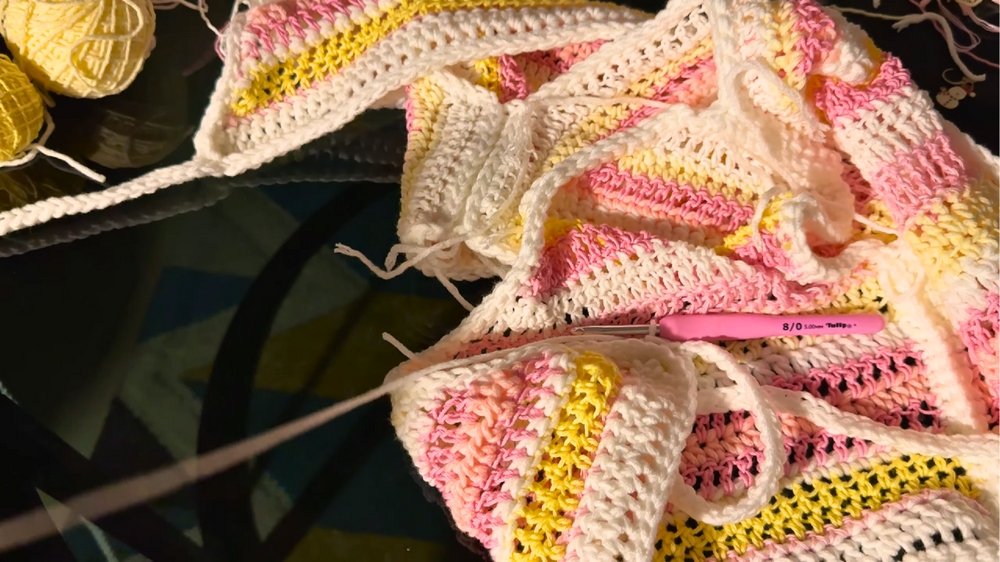
Tip
When working with leftover yarns, always plan the project dimensions to avoid running out of yarn prematurely. If unsure, shop for extra matching colors so the outcome maintains consistency.
Conclusion
Kate’s video successfully demonstrates how to turn leftover yarns into a stunning crochet wrap top/cardigan that aligns with personal style and practicality. With beginner-friendly techniques, creative use of materials, and customization tips, this tutorial inspires sustainable and thoughtful crafting. Whether styled as a vest, wrap top, or cardigan, the finished piece showcases the beauty of upcycling yarns into wearable artworks.
